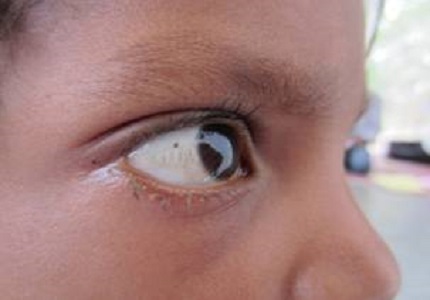Nutritional and health status of jenukuruba tribal children in Mysore district
Abstract
Introduction: Nutritional status is a sensitive indicator of community health and nutrition. It has an important role in determining health status especially in tribal children.
Objective: This study was done to assess nutritional and health status among Jenukuruba tribal children in Mysore district. Methods: Community based cross sectional study done over a period of 2 years. 4207 children between the age group of 0-15 years of Jenukuruba tribal community were included. All data were recorded in a predesigned proforma. Anthropometric measurements were recorded. Weight for age, Height for age and BMI were calculated. Clinical examination was done to look for anemia, vitamin A deficiency and other morbidities. 24 hours dietary recall method used to assess dietary intake of calories and proteins. Mean energy and protein intake measured and compared with RDA of Indian standards.
Results: 1393 (33.1 %) were stunted with height less than 3rd centile and 1588 (35.7 %) were underweight with weight below 3rd centile using WHO growth charts. 1175(27.9 %) of children were having BMI < 5th centile, 127( 3.3 %) children were overweight with BMI between 85th and 95th centile and 9(0.2%) children were obese with BMI>95th centile. 53.4% were having varying degrees of protein energy malnutrition. 2083(49.5%) of study population had microcephaly. Mean RDA of energy is deficit in all age groups when compared to revised RDA recommended by ICMR in 2010 for Indians.
Conclusion: Health and nutritional status of Jenukuruba tribal children is very poor. Immediate appropriate interventional programmes are needed for improving their health and nutritional status.
Downloads
References
2. Government of India Census. Website: http:/www.censusindia.gov.in. Accessed 12 Mar, 2009.
3. Nutrient requirements and recommended dietary allowances for Indians. A Report of the Expert Group of the Indian Council of Medical Research 2009:http://icmr.nic.in/final/RDA-2010.pdf; Accessed 12 mar, 2009. [PubMed]
4. Kumar N, Shekhar C, Kumar P, Kundu AS. Kuppuswamy's socioeconomic status scale-updating for 2007. Indian J Pediatr. 2007 Dec;74(12):1131-2. [PubMed]
5. Suryakantha AH (2009) Community Medicine with Recent Advances. New Delhi: Jaypee Brothers Medical Publishers (P) Ltd 2: 659–660.
6. Proceedings of the workshop on protein calorie malnutrition. Ecology and Management. Indian Pediatr. 1975; 12(1) :57-117.
7. Rao DH, Rao KM, Radhaiah G, Rao NP. Nutritional status of tribal preschool children in three ecological zones of Madhya Pradesh. Indian Pediatr. 1994 Jun;31(6):635-40.
8. Bose K, Chakraborty F. Anthropometric characteristics and nutritional status based on body mass index of adult Bathudis: A tribal population of Keonjhar District, Orissa, India. Asia Pacific Journal of Clinical Nutrition, 2005;14(1): 80–82.
9. Bose K, Bisai S. Adult Santal males from Orissa and West Bengal: Comparison on their anthropometric profile and chronic energy deficiency.Study of Tribes and Tribals, 2007;5(1): 65-69.
10. Ghosh A, Bala SK. Anthropometric characteristics and nutritional status of Kondh: a tribal population of Kandhmal District, Orissa, India. Ann Hum Biol. 2006 Sep-Dec;33(5-6):641-7.
11. Khongsdier R. Body mass index of adult males in 12 populations of northeast India. Ann Hum Biol. 2001 Jul-Aug;28(4):374-83. [PubMed]
12. Mahanty AK, Sahu PN. Food habits childhood mortality growth and nutritional status of the rural Kisans of Sambalpur, Orissa. Man in India, 1991;71(4):601-610. [PubMed]
13. Mitra M, Kumar PV, Chakrabarty S, Bharati P. Nutritional status of Kamar tribal children in Chhattisgarh. Indian J Pediatr. 2007 Apr;74(4):381-4. [PubMed]
14. Mittal PC, Srivastava S. Diet, nutritional status and food related traditions of Oraon tribes of New Mal (West Bengal), India. Rural Remote Health. 2006 Jan-Mar;6(1):385. Epub 2006 Apr 10. [PubMed]
15. Rao H. Assessment of nutritional status of Jenukurabas-A primitive tribe of Karnataka. The Indian Journal of Nutrition and Dietetics, 1993;30:66-71.
16. Sabat KR, Das NC, Das BL . Village of eastern ghats, Orissa. Journal of Human Ecology,.1991;8(1):13-19. [PubMed]
17. Khandait DW, Vasudeo ND, Zodpey SP, Ambadekar NN, Koram MR. Vitamin A intake and xerophthalmia among Indian children. Public Health. 1999 Mar;113(2):69-72. Public Health. 1999 Mar;113(2):69-72. [PubMed]
18. Sinha A, Jonas JB, Kulkarni M, Nangia V. Vitamin A deficiency in schoolchildren in urban central India: the central India children eye study. Arch Ophthalmol. 2011 Aug;129(8):1095-6. doi: 10.1001/archophthalmol.2011.198. [PubMed]

Copyright (c) 2015 Author (s). Published by Siddharth Health Research and Social Welfare Society

This work is licensed under a Creative Commons Attribution 4.0 International License.


 OAI - Open Archives Initiative
OAI - Open Archives Initiative


